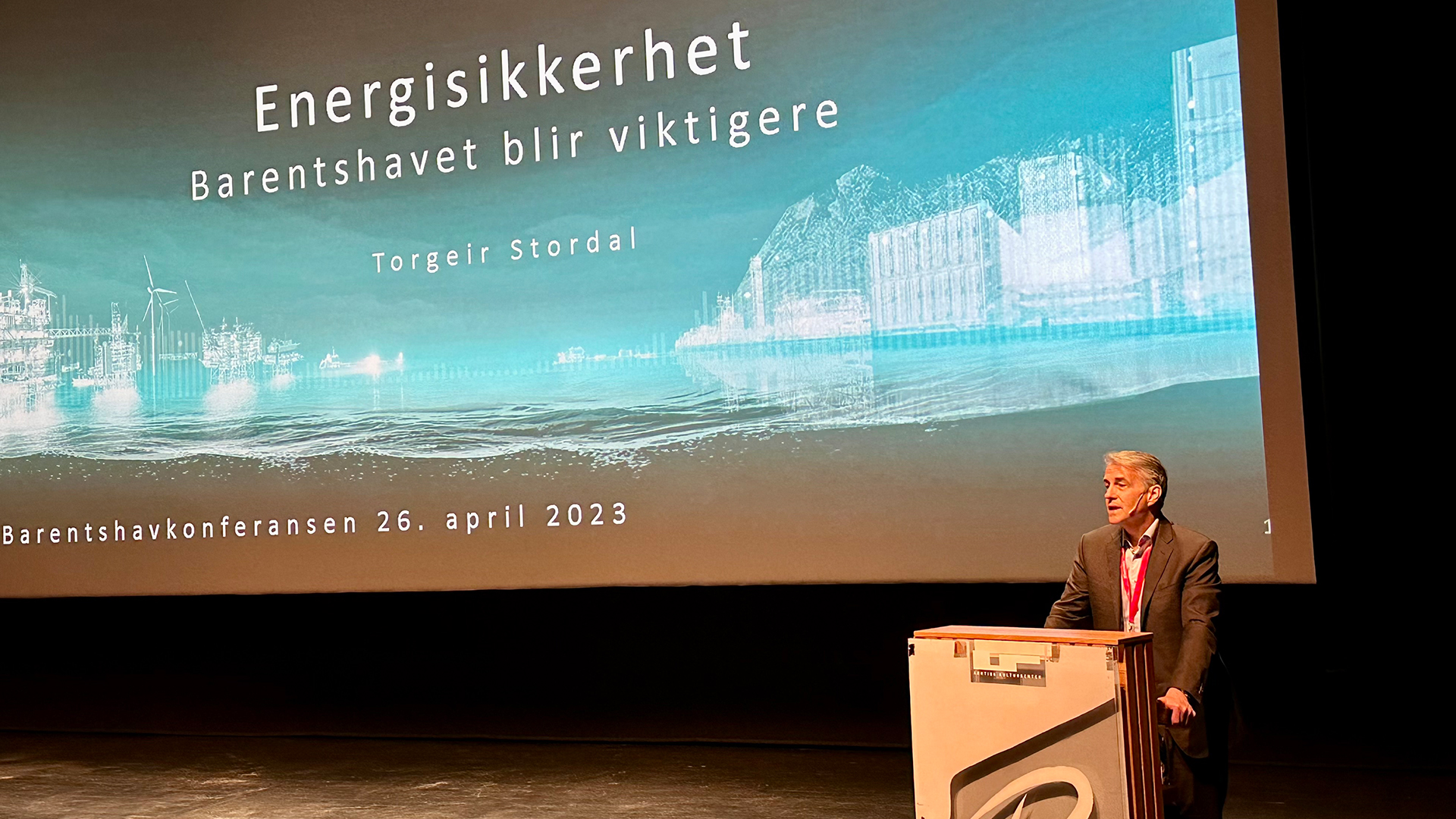Not enough exploration in the Barents Sea

Director General Torgeir Stordal spoke optimistically on behalf of the Barents Sea during the conference in Hammerfest on Wednesday. Photo: Ola Anders Skauby/NPD.
4/26/2023 On Wednesday, a sold-out crowd at the Barents Sea Conference in Hammerfest heard Director General Torgeir Stordal encourage more exploration.
"There are still considerable resources in the Barents Sea, both in fields, discoveries and in exploration opportunities," Stordal said.
He pointed to the Snøhvit and Goliat fields as the foundation for current activity and production. And next year, the Johan Castberg field will come on stream. According to Stordal, this opens up new opportunities.
New discoveries have recently been made both in the area surrounding Goliat and the area surrounding Johan Castberg. Such discoveries can generate substantial values when they are tied back to existing infrastructure.
"Good work is also under way on a new development solution on Wisting, which is the largest discovery on the Norwegian shelf yet to be developed. We're excited to keep track of this in the future," Stordal said.
Once additional fields come on stream, the Barents Sea will become a more important contributor, and this will further bolster Norway as an energy supplier to a Europe in need.
Only six per cent of resources have been produced in the Barents Sea, while the discovered resources here are estimated at just over 30 per cent of the total i the areas which have been opened for petroleum activities.
In other words, there is still a considerable potential in undiscovered resources (more than 60 per cent of the total in the areas in the Barents Sea which have been opened for petroleum activities).
"Our calculations showed that exploration activity is profitable in all ocean areas, including the Barents Sea," Stordal reminded the audience.
He also addressed the newly published Gassco report on export solutions for gas from the Barents Sea:
"A new profitable gas export solution could provide more incentive for exploration," Stordal said.
Director Communication, public affairs and emergency response
Updated: 4/28/2023